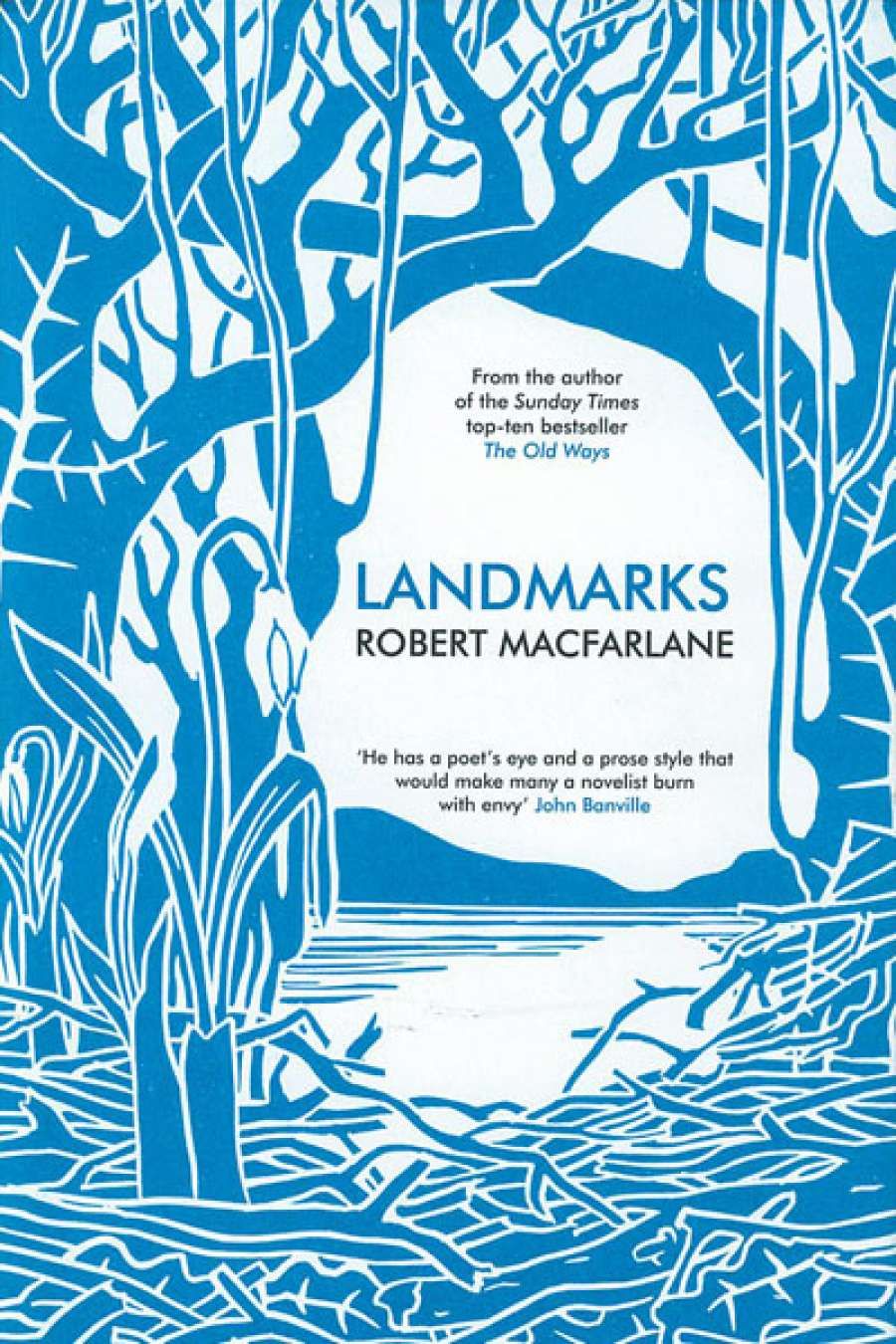
- Free Article: No
- Contents Category: Natural History
- Custom Article Title: Danielle Clode reviews 'Landmarks' by Robert Macfarlane
- Book 1 Title: Landmarks
- Book 1 Biblio: Hamish Hamilton, $45 hb, 400 pp, 9780241146538
This world of native Gaelic speakers opens Macfarlane’s Landmarks. But the treasure hoard he has found there is not one of silver armbands, golden torcs and coins, but one of words. Words of local languages rich enough to articulate the complex subtlety of landscapes with all the fine-grained precision and accuracy of a painter or a poet. The ‘Peat Glossary’ of Lewis was compiled by local activists as a ‘counter-desecration phrasebook’ opposing the development of Europe’s largest wind farm. Developers considered the region to be barren, empty, desolate, and wild – a wasteland. Locals compiled the Peat Glossary to document the place-language that articulates the particular beauty, diversity, and uniqueness of the Lewisian moors.
‘Language is fossil poetry’, according to Ralph Waldo Emerson. But not everything is preserved in the fossil record and our great heritage of oral languages will be lost if we fail to preserve them in written form before their speakers fall silent. Even everyday common words run the risk of being purged from daily use as our technological world expands into the space once occupied by nature. The replacement of words like acorn, bluebell, kingfisher, and otter with attachment, blog, celebrity, and chatroom in the Oxford Junior Dictionary illustrates, for Macfarlane, a growing detachment from nature.
 Isle of Barra, Western Isles Scotland (photograph by calflier001 via Wikimedia Commons)
Isle of Barra, Western Isles Scotland (photograph by calflier001 via Wikimedia Commons)
Not everybody loves to read dictionaries. Macfarlane’s challenge must have been how to organise his treasure trove of nature words, drawn not just from the Peat Glossary, but also from local dialects and languages across Britain: from Cornwall to Shetland and Ireland, from meteorologists and speleologists, from farmers to fishermen and from poets to the military. Macfarlane addresses this challenge by interspersing his glossary, clustered into ecologies like flatlands, woodlands, and coastlands, with essays on a selection of eminent UK nature writers.
‘Macfarlane’s challenge must have been how to organise his treasure trove of nature words’
Macfarlane’s profoundly personal and poetic style makes these insertions a delight to read in themselves; they connect us with writers rarely encountered and reacquaint us with others more familiar. Some of these essays sit comfortably alongside their associated glossaries. Nan Shepherd’s work on the Cairngorms complements the Uplands glossary; Roger Deakin flows naturally into Waterlands. The geological writings of Jacquetta Hawkes and Clarence Ellis layer the glossary on Earthlands, while Northlands finds a natural counterpart in Peter Davidson. In an overt recognition of the very humanness of the British landscapes, Richard Jeffries focuses our attention on the multitude of ‘Edgelands’: the much-neglected bastard country between ‘wilderness’ and ‘civilisation’.
‘Macfarlane’s profoundly personal and poetic style makes these insertions a delight to read in themselves’
Other nature writers are less easy to locate in a particular landscape: like the ornithological writings of J.A. Baker; the self-described ‘poetico-trampo-geologist-bot and ornith-natural, etc.’ John Muir; or the loss-driven experiential writing of Richard Skelton. But all of them share, with Macfarlane, a desire to capture and immortalise the landscapes they love: all seem ‘appalled by the forest of daily forgetting – the black noise that pours always over the world’s edge’.
The glossaries provide a resource to record and reuse words that might otherwise be lost, but, like fossils, they tell us relatively little about the living words, their use, their sounds, their music. On seeing these lists of jumbled consonants and vowels unpronounceable to the untrained, I longed to hear the singing intonation that is the natural form of these words, embodied in the onomatopoeic Gaelic rhymes of local bird songs – Kirvik, kirvik, crodh an duina a’s a’chore (the chaffinch song).
Macfarlane rarely ventures far from his UK heartland, aside from a brief sojourn with Barry Lopez in the Canadian Arctic and writings on the Nordic north. But his focus on the local and the past does not deny the global or the future. In the postscript, he acknowledges the breathtaking compilation of place words from across Afro-Asia, an extraordinary document comprising some 50,000 entries, running to 3,500 pages. But Macfarlane’s primary conclusion concerns the connection between children, nature, and language, offering both a vision and a foreshadowing of a future either connected or disconnected with our natural world. The final glossary, then, is left for us to write ourselves; blank pages for our own local place-words, recorded, rendered, remembered, or created.


Comments powered by CComment